At 1 a.m., I scrubbed three inches of ketchup slime from the inside of a trash can in Yosemite Village. I’d told my boss that I received a degree from UCSC.
“Well,” he said. “You can be in charge of everything that’s not important.”
It was June 2014. I was 32 years old and inside of a trash can. Over the past 13 years, I’d given everything to climbing—even though climbing had nearly taken everything from me (I usually don’t say stuff like this sounds so dramatic). I’d climbed Moonlight Buttress (5.12d) in Zion, the Westie Face (5.13a) on Leaning Tower, Quantum Man (5.13a) on Washington’s Column and Final Frontier (5.13b) on Fifi Buttress.
I had also fallen 100 feet while free-soloing North Overhang (5.9) in Joshua Tree, and miraculously survived—barely. I wondered if possible immortality might impress my boss more than my college degree.
On a trip to in Indian Creek, a friend made a video of me, titled, “The Last Dirtbag.” Currently, I was climbing harder than I ever. Not hard enough to be sponsored, though. I still lived in my Saturn station wagon, traveling the U.S. and climbing.
Then my station wagon died. While driving into the Valley, my car sputtered to a complete halt. I had no money, no car and no home.
I needed to be something more. I picked an audacious goal for myself. I would free climb El Capitan in a day.
I continued to live the true dirtbag lifestyle, which lacks the glory that Instagram makes it seem, with the goal of becoming strong enough to send the Freerider in a day. I tried the route four times from the ground and put in countless days working on it.
After my car broke down, I slept with the mice in a friend’s garage in Yosemite Village. I went for broke on El Cap, trying the Freerider again. I could barely afford the food I needed for an attempt. I failed anyway, one hanging the Boulder Problem pitch, a 5.13a that had never been onsighted. The only thing that fucked me all spring was El Cap.
When not on El Cap, I worked the graveyard shift. This was the glamorous life of the The Last Dirtbag, a fallen soloist, a college graduate cleaning trashcans, a man who let his dreams replace reality.
At least I wasn’t in a hospital bed.
December 28th, 2004.
Desert Springs Memorial Hospital.
His sequin jumpsuit reflected the flickering casino lights. The ice skates cut smooth lines in the ice, sounding like helicopter blades as he delivers my dinner of crackers.
It was two weeks after the fall before I realized the ice skater wasn’t real. I woke from my coma dreams to a numbing morphine drip, prone in the ICU at Desert Springs Memorial Hospital near Joshua Tree. I wanted to return to the coma. My dreams were better than the reality of the pain and failure.
The doctors spoke stoically when they discussed the eight hours of operations thus far—the damage to my occipital lobe, the spinal fusion, the compound fracture of my ulna. I couldn’t quite understand what they had done.
As Arthur C. Clarke wrote, “Any sufficiently advanced technology is indistinguishable from magic.”
I was Frankenstein’s monster, confused, angry, and sewn back together wrong. I tore the IV out of my arms. I wanted to pull on my jeans and crawl to El Cap.
My identical twin, Matt, held me down while a nurse sedated me.
In 2001, the year after I finished high school, when I was 19, I rode a bus into Yosemite Valley. I left my rural upbringing in upstate New York and Vermont to travel to California.
“Yosemite is the mecca,” John Long wrote in How To Rock Climb. I believed Long’s fairy tale stories of Yosemite rock jocks and wall rats having amazing adventures as renegade outlaws, duping rangers while landing gigs as Hollywood stunt doubles, finding plane loads of marijuana and making personal fortunes.
I filled one duffel bag with clothes and filled another bag with webbing. I wanted to set up top ropes on the big rocks. I saw the Rostrum and thought I might have enough webbing. The bus passed Middle Cathedral and I thought I might need more webbing. I looked up at El Capitan and started cleaning rooms in the Yosemite Lodge two days later, to save money for all that webbing.
Within a year of shaking up my first trad lead, After Six, a 5.6 on Manure Pile, I climbed the Zodiac on the right side of El Capitan in 21.5 hours. Putting in all that time in Yosemite taught me how to climb to the top of anything. Free climbing would be a bigger challenge, though.
I spent a summer in Tuolumne. I met friends in Joshua Tree; we traveled to Indian Creek, Vegas, Squamish.
By 2004, I still hadn’t found a random cargo of drugs to make me rich, Hollywood hadn’t called, and I hadn’t gone big. I started school in Santa Cruz, to have a fall back in case the plane of marijuana never crashed nearby. I ran 15 miles a week, bouldered at Castle Rock two days a week and climbed on the weekends in the Valley on the weekends. I was fit and focused.
I spent my first quarter at UCSC living in a tent in the woods behind campus. I wanted to save money and to focus on climbing.
For winter break, I traveled to Joshua Tree to climb somewhere warm. I ran through the campground soloing the easier routes. I pretended to be a Stonemaster, one of the Hendrix-era rock jocks who transformed rock climbing in Yosemite and Southern California.
I moved fluidly up North Overhang (5.9) on Intersection Rock, climbing through a hand crack to a four-foot roof, the crux. I reached out cautiously, felt the jams, sunk my hand around the roof’s lip, and pulled over. I neared the summit. I felt secure knowing I’d sent the crux, 100 feet of space swimming below me.
I repositioned my feet, moving them underneath my body—a slight miscalculation. I started to barn door, my balance suddenly gone.
I didn’t want to scream. I had too much pride. Death, however, was imminent, and there would never be a more appropriate time to cry for help. So I yelled. Seventy feet of air rushed by. A second later, I hit a ledge. I was ecstatic and felt invincible. I started to sit up and promptly rolled off, striking the ground thirty feet below.
Trying to walk it off, I stumbled to my feet. But then a seizure jolted through me and I convulsed, crumpling to the ground. Nearby climbers ran to help. The crater I’d made began to fill with blood.
My insecurities crushed me. I heard the faint thud of helicopter blades as I blacked out.
January 9, 2005.
Desert Springs Memorial Hospital
John Long
In short, James is expected to fully recover but with some disabilities, the extent of which cannot be determined till he starts serious rehab once his spine heals enough for him so start the grueling exercises.”
His concussion has passed and his mind seems clear. But given the various meds and the fact that he had the living daylights knocked out of him, his affect is quiet.
Compounding this are breathing problems (he cannot yet fully inflate his lungs), so he can’t get enough wind to talk with gusto.
He’s got some mobility in his powdered left elbow, which seems to be healing nicely.
His ankle was pretty worked, and he’ll being hiking a long trail to get good mobility back in both elbow and ankle.
He broke several vertebra (C3 and C4, and others down lower I believe) and those have been stabilized with titanium rods–his main source of pain.
His spine was bruised so sensation is only slowly returning to his feet, a condition that could come into play once he relearns how to walk.
Six months later, my orthopedic surgeon removed pins from my arm.
“Perhaps you should take up a safer sport, like bowling or cycling,” he said.
I ignored the nerve damage—the loss of movement in my foot, the stunted left arm—and the trepidation. I obsessed over climbing and convinced myself I’d been rebuilt harder, better, faster, stronger.
“You’ve been given a second chance at life,” my speech therapist told me. “What are you going to do with it?”
I decided that the fall would not be a learning point, merely a speed bump. I hated the idea that I was given a second chance, the implication that I fucked up the first time.
A year after my accident, I returned to my tent in the woods behind UC Santa Cruz, putting my rent money from student loans toward climbing trips. I spent more time at the crag than in the classroom. During breaks, I went to Smith Rock, Indian Creek, Zion, Squamish Tuolumne, Red Rock, and Hueco Tanks. I stacked my classes two consecutive days a week, enduring marathon days of economics and accounting principles that then left me four uninterrupted days in the Valley.
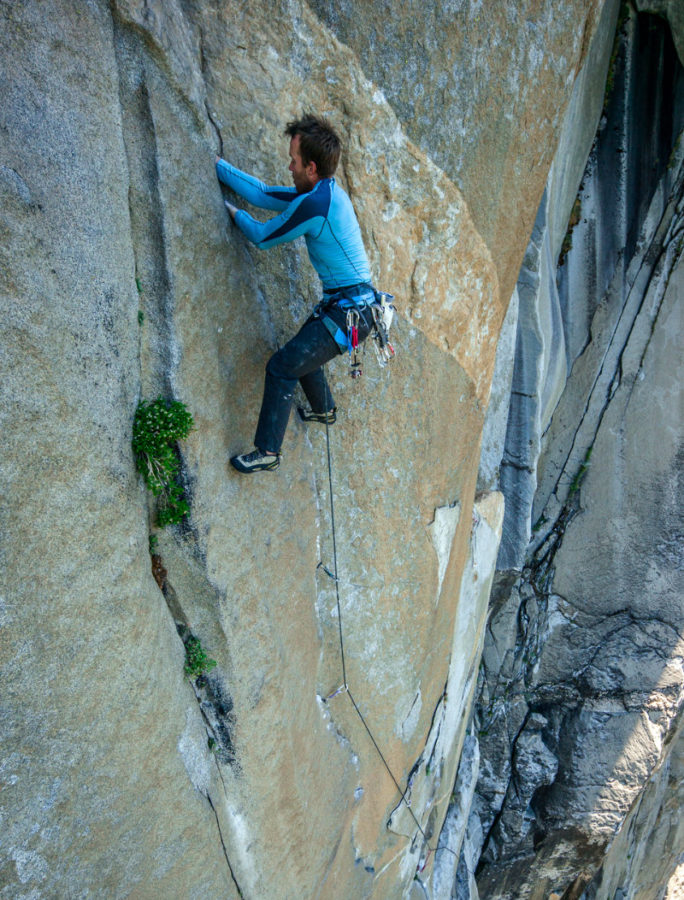
In June, I packed my tent into my Saturn station wagon, my new home. I graduated with a degree in Economics and Business management from UCSC. I had wanted to write, but failed at getting into the creative writing program. But I had a car, a place to live and a way to travel to the crags.
I skipped my graduation and headed to Joshua Tree, for redemption. I would free solo North Overhang again.
I was a better climber than when I fell. I had the physical ability, but wondered about the emotional control.
I finished chalking my hands, inhaled once, and then swung out above the void. At the crux, I rocked onto my foot, jammed my hand, and pulled through. The climbing was over quickly. I wondered how the hell I ever fell.
Standing on the summit, I imagined I had undone my failure—that I never took that fall. For a moment, I forgot about the haunting dreams, the lingering pain, and the scars. I felt normal again. This is what I worked so hard for. The desert wind blew, chilling the titanium rods in my back and the metal plate in my ankle. My fingers traced the foot-long scar that runs down my spine. I realized the scars will never fade. The reality of the lifestyle set in. It wasn’t worth it. And then the moment was gone.
In 1993, Lynn Hill made the first free ascent of El Capitan via the Nose. A year later, she returned to free the route in a single day, setting the standard of big wall free climbing. In the past twenty years, only nineteen people have been able to combine bouldering, offwidth and slab climbing, sport climbing and the logistics of big wall climbing to free climb El Capitan in a day. The feat sits at the pinnacle of free climbing as it requires a mastery of rock climbing at a difficult level. I hoped that by joining the upper echelon of climbers, my dedication would somehow be validated, that I would feel confident in my choice to a life of chasing rocks.
On my fourth attempt on Freerider, I climbed the 15th pitch, the chimeney above Hollow Flake ledge opting to climb deep inside, where the climbing is harder, but more secure.
“If you want to free climb Freerider in a day, you cant worry about dying,” my friend Nik Berry had told me. His words rang through my head. I’d fallen enough in my life. I wanted the security.
Ironically, I climbed 40 feet unprotected then fell. My feet skidded down the granite. I slammed against the wall. Blood oozed down my back. I kept going.
I reached the infamous Boulder Problem pitch—the difficulty crux of Freerider. A decade ago, this pitch had been easier but a pair of Australian climbers caught their haul line behind a juggy flake in the middle of the wall. The rope pried the flake off and increased the difficulty greatly.
The other option, The Teflon Corner, paralleled the Boulder Problem but remained a near impossibility for me. The metal in my back and my abysmal flexibility killed my ability to stem well, to contort my body and press my palms next to my hand.
If I wanted to free climb Freerider, I’d need to send the Boulder Problem, a V7 and at my limit.
All my prior attempts at redpointing this pitch had been failures. I’d spent countless hours working on these moves, hiking to the top of El Capitan, rappelling and bouldering. I’d done the boulder problem nine times on toprope but had never been able to lead it from the ground. This time, I screamed my way through the moves, only to punt off at the very end.
Alex Honnold led the rappels to the ground. I shook descending, and felt terrified as we rapped to the ground. I was tired. I was a failure.
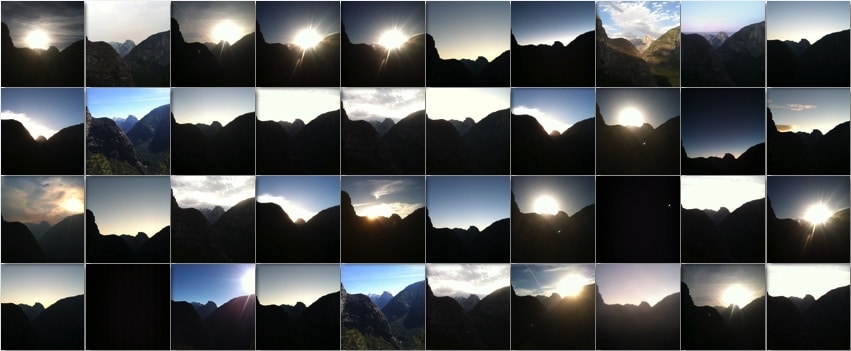
Each and every time that I hiked to the top of El Capitan, to rap down Freerider and work the top 1,300 feet of the route, I snapped a photo of the sun rising over Half Dome. By April 2015, I had taken 39 of these pictures. I put in a minimum of two hours of hiking up and down, longer when I carried loads. I wondered what I was doing with my life: 33 years old, living in a car, chasing a dream that may never come true.
I wanted to be a real rock climber. A thunderstorm rolled in while I worked the steep upper pitches. I felt the rain on my back. I threw my body into the offwidth. Between the rain and the sweat, I couldn’t tell if I was crying.
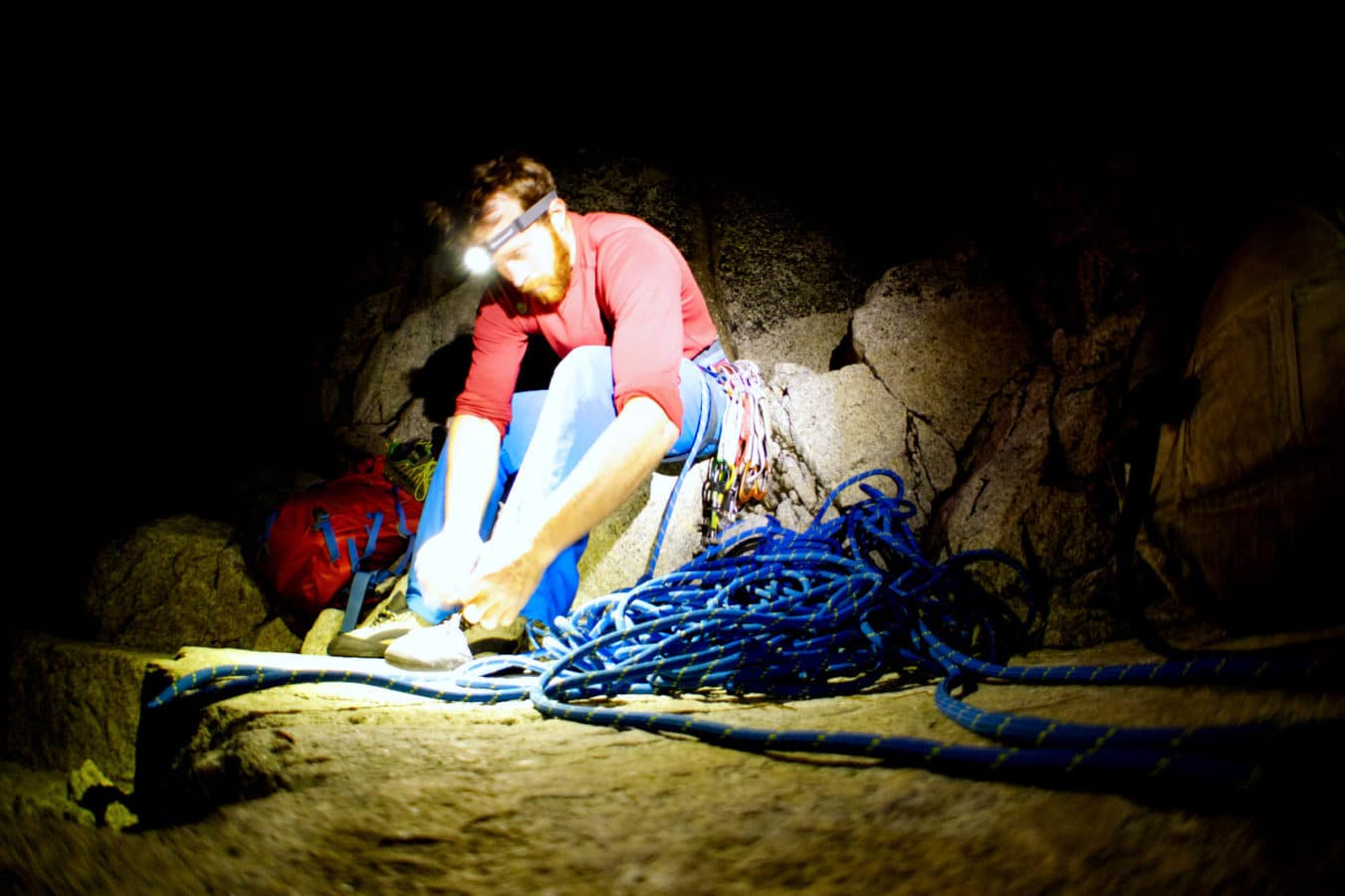
I went on a ground-up attempt of Freerider on May 6, 2015, with Austin Siadack. We started climbing the Freeblast slabs a few minutes past 3 a.m. The full-moon light reflected off the tiny green-and-white frogs hunkered into the cracks. They seemed more awake than me.
I pulled up slack and short-fixed Austin. I continued climbing with a huge loop of slack, the Pakistani Death Loop. I was scared, soloing with a rope on, but less afraid of dying. A storm was rolling into the Valley the next day and the temperatures had already started to drop. We climbed through the first 10 pitches in 3 hours.
That familiar light came over Half Dome.
Soon we were at the Boulder Problem pitch.
“How bad do you want it?” Austin asked me. I assumed it was a rhetorical question. I stared at the Boulder Problem. I felt good, better than last fall with Honnold, better than a year ago with Ben, better than a year and a half ago with Hazel, better than two years previous with Aaron.
Eight hours of climbing and twenty-three pitches swam below me. I grabbed the holds and moved my feet. I moved to the third bolt. I had fallen here with Aaron. I clipped the third bolt and reached to the loaf hold. I had fallen here with Hazel and Ben. I felt strong still. I flipped my hand, sucked my hips in and kicked the wall. I had fallen here with Honnold. This time, my foot stuck. I manteled to the crack.
Keep it together, I told myself. I choked inside. I clipped the anchor and let out a guttural scream. I had done it. I fixed the rope and Austin jugged up. I tried to look at the next pitch but water clouded my eyes.
At 6:10 p.m. on May 6, I stood on top of Freerider (VI 5.13a), having free climbed my first El Cap route in a day—just under 15 hours, to be exact. I was really tired but really stoked.
My stomach hurt from all the climbing. I stared across the Valley. I never wanted to do that again: the dedication to the lifestyle, the heinous climbing, the commitment. I wondered if I should toss my rack off the cliff. That was what a character in John Long story would do. But I made up for the fall in Joshua Tree. I’d spent over a decade in Yosemite, I’d made friends, had adventures and learned. I failed and I got back up. I accomplished something monumental. This was my glorious moment. I walked to the bushes and dry heaved.
I walked to the base the next day to retrieve my shoes. Rain fell down the cliff. My friends and climbing partners sent me notes of congratulations. They were inspired. I’d put in 52 days on the route over 4 years. I had committed to the lifestyle. I had pushed myself. I had succeeded.
I started climbing on El Cap with the goal of wanting to become “something more.” I wondered if I had achieved it. The process of setting and achieving such a lofty personal goal taught me about myself, about what I wanted in life and personal dedication. The metal rods would remain in my back. I would never get rich from the ascent. What I did was far from ground breaking. It took me just over 4 years to free climb El Cap in a day. I am the weakest climber to ever do it. Still, I felt a great sense of personal pride. Water poured down the wall. I shouldered my wet pack. Clouds shrouded El Cap. I walked towards the meadow knowing I climbed that.

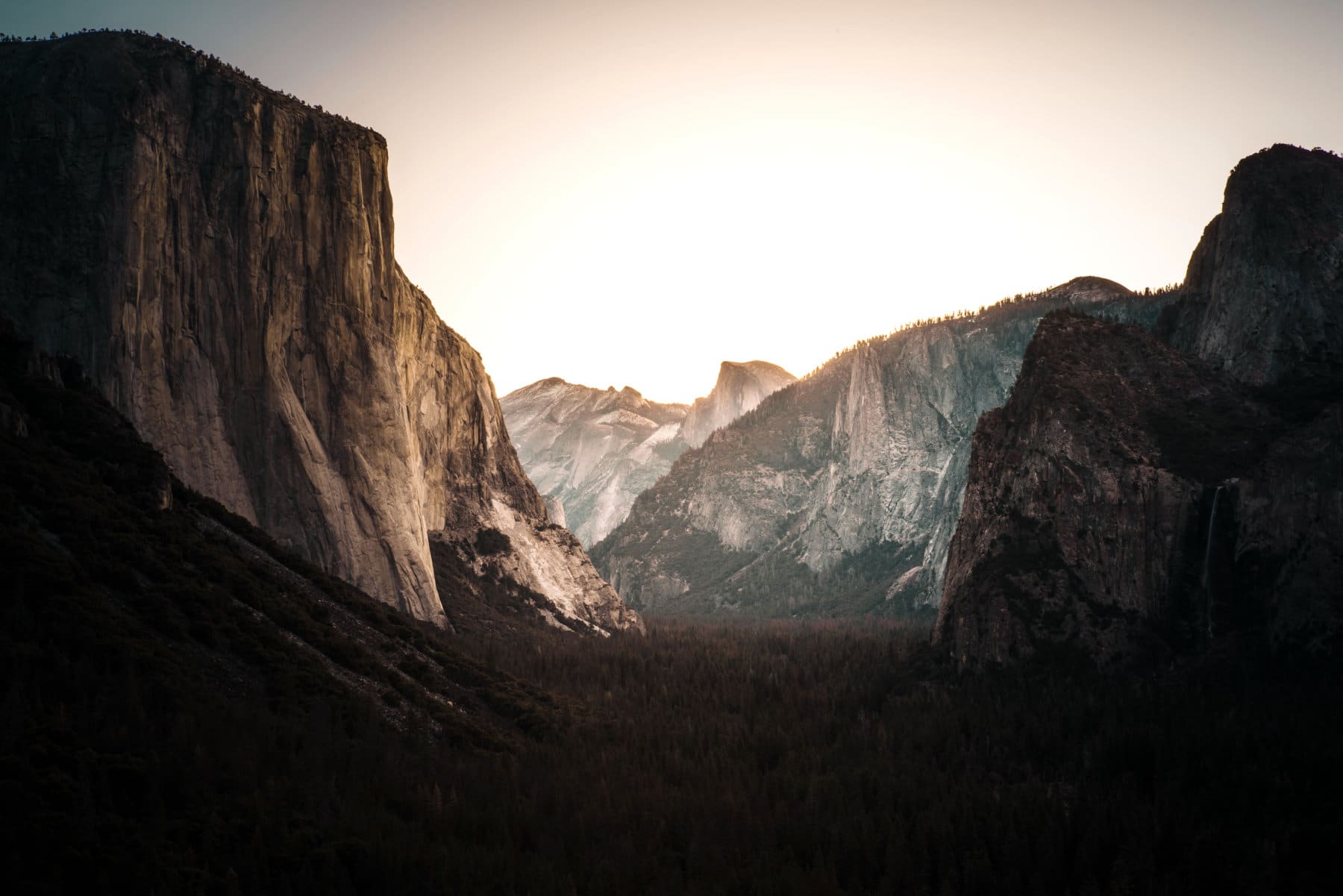
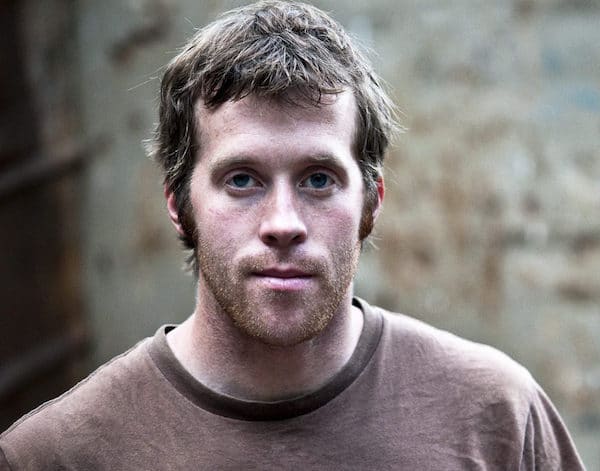

0 Comments